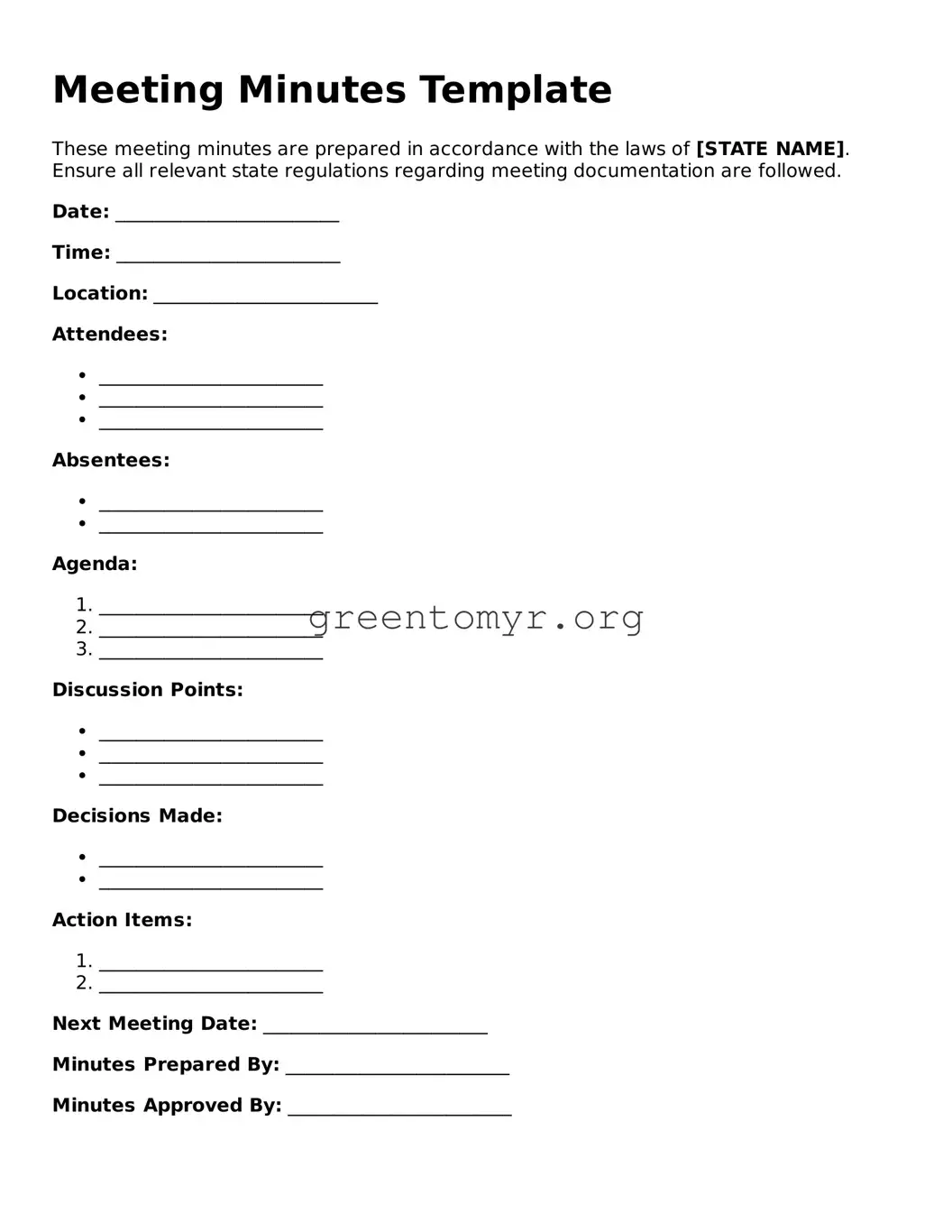Filling out Meeting Minutes can seem straightforward, but there are common mistakes that people make. The first mistake is failing to capture key details, such as the date, time, and location. Lack of this information can lead to confusion later. Always ensure these basic elements are present at the start of the document.
Another frequent error is not listing attendees correctly. Omitting someone’s name can cause issues when trying to follow up on action items. Make sure to double-check the attendee list to ensure everyone is accounted for.
Not using clear language is a mistake that can create misunderstandings. Minute-takers sometimes use vague terms or jargon, which may not be understood by all attendees. Aim for clarity and simplicity in your writing.
Inaccurately summarizing discussions is a serious oversight. When capturing the essence of conversations, it is crucial to accurately reflect what was said. If discussions are misrepresented, the Minutes can mislead those who read them later.
Failing to include decisions made during the meeting is another common slip. Without documenting these resolutions, it becomes difficult for teams to reference decisions in the future. Highlight all conclusions clearly and concisely.
Leaving out action items or assignments is a major mistake. Each task should have a designated owner and a deadline. This helps ensure accountability and clarity regarding who is responsible for what after the meeting.
Another error is not providing context for discussions. Readers may not remember the details of the previous meetings. Including brief background information can help, especially for new team members or those who missed the meeting.
Some people forget to proofread the Minutes before distribution. Typos and grammatical errors can undermine the document's professionalism. Taking a moment to review the text can save your team from confusion and maintain credibility.
Submitting the Minutes too late is also problematic. Delivering them while the information is still fresh in everyone’s mind is essential. Delays can hinder follow-ups and make it harder to act on discussed items.
Finally, not keeping a consistent format can lead to disorganization. Establishing a template can promote uniformity and make it easier for others to navigate through the Minutes. Consistency helps everyone understand the document quickly and efficiently.
